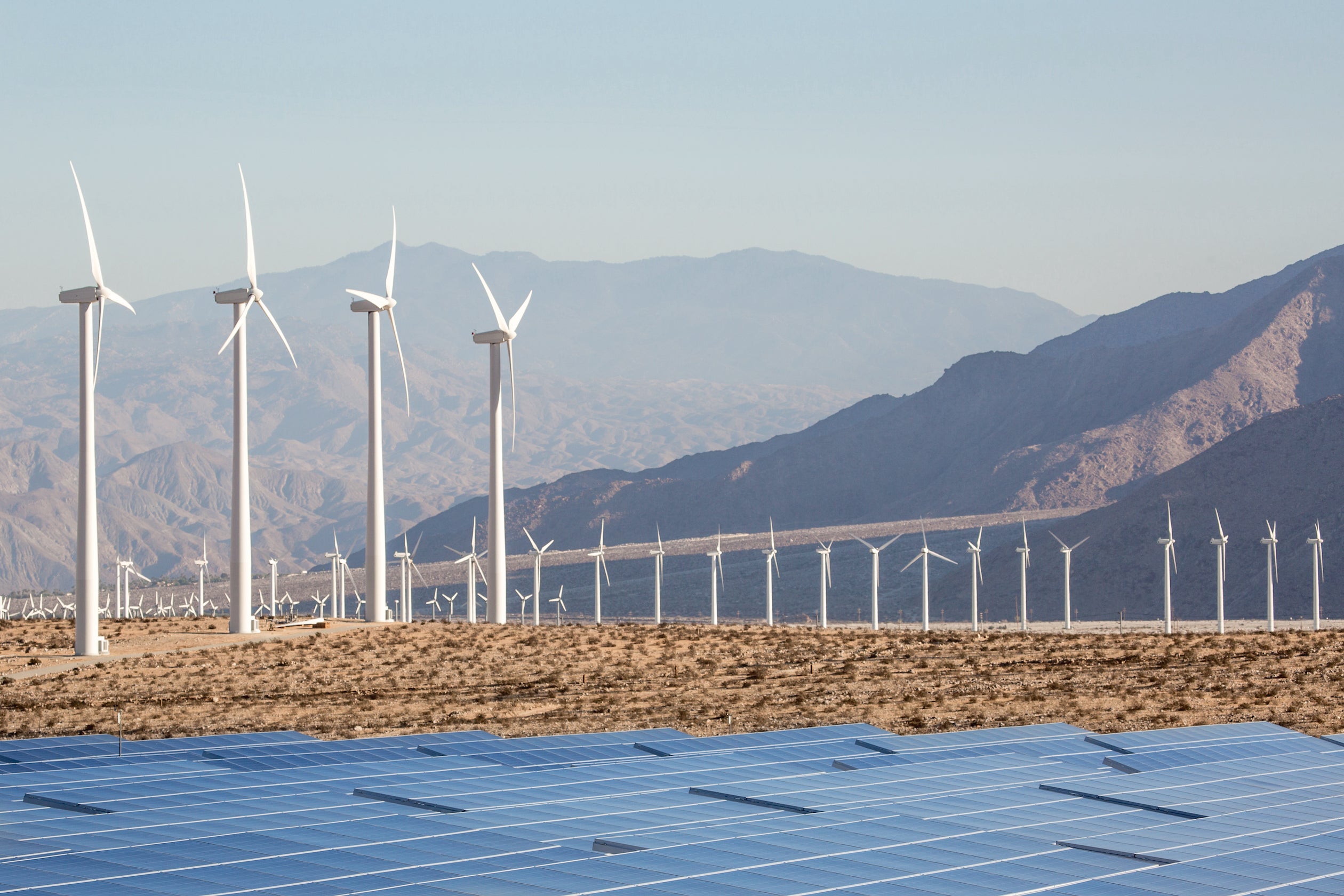
CLIMATEWIRE | Wind and solar generated more electricity than coal through May, an E&E News review of federal data shows, marking the first time renewables have outpaced the former king of American power over a five-month period.
The milestone illustrates the ongoing transformation of the U.S. power sector as the nation races to install cleaner forms of energy to reduce greenhouse gas emissions from fossil fuels. Power markets have witnessed a precipitous drop in coal-fired generation this year, driven by low natural gas prices, a mild winter and a wave of coal plant retirements.
“From a coal perspective, it has been a disaster,” said Andy Blumenfeld, an analyst who tracks the industry at McCloskey by OPIS. “The decline is happening faster than anyone anticipated.”
Renewable energy generation exceeded coal-fired power in 2020 and 2022, but only when hydropower was counted as a source of renewable energy, according to figures compiled by the U.S. Energy Information Administration.
This year has been different. Wind and solar sources generated a combined 252 terawatt-hours through the first five months of 2023, compared with coal output of 249 TWh, EIA data shows. Hydro generated an additional 117 TWh through May.
EIA’s numbers for April and May are preliminary, said Chris Higginbotham, an agency spokesperson.
“Our official estimates from the Electric Power Monthly show that combined electricity generation from wind and solar exceeded generation from coal in January, February and March,” he said. “Our real-time data, which is subject to revision, indicate that trend continued in April and May.”
Coal generated almost half of the country’s electricity as recently as 2008. It has been in steady decline ever since, as a wave of older coal facilities retired and were replaced by a combination of natural gas and renewables.
Yet even by that standard, coal’s sudden drop in 2023 has been remarkable. The beleaguered industry experienced something of a reprieve last year. A spike in natural gas prices, driven by a strong economy and surging energy demand in Europe, where gas markets were thrown into flux by Russia’s war in Ukraine, left utilities scrambling for coal. Many signed contracts to purchase coal at elevated prices in 2022, said Blumenfeld, the OPIS analyst.
Energy markets have swung in the other direction since then. A relatively mild winter and a slowing U.S. economy has pushed electricity demand down 3 percent this year. Natural gas production has continued to climb. The result has been a glut of gas followed by low prices. Henry Hub, the national benchmark for gas prices, averaged $2.15 cents per million British thermal units in May, down from a high of $8.81 in August 2022.
Coal plants will have difficulty competing against gas in that market, analysts said. But structural factors have also contributed to the fall in coal output.
The U.S. has retired around 14 gigawatts of coal capacity, or roughly 7 percent of the coal fleet, since the start of 2022. While coal was declining, wind and solar have been growing by leaps and bounds. Power companies added 22.5 GW of wind and solar capacity in the 12 months ending in May, EIA reported last week. Gas, meanwhile, has continued to grow.
The result has been a crash in coal generation. EIA figures show that coal was down 27 percent compared with the same time last year and below levels recorded in 2020, when the Covid-19 pandemic shut down large parts of the economy.
“I don’t think it’s too shocking those shares of generation paths are crossing,” said Harrison Fell, a researcher at Columbia University. “The writing has been on the wall for coal for a while. There are a lot of incentives to build renewables, and really only delays with interconnections are really holding them back.”
The rapid retirement of fossil fuels has prompted growing debate about the reliability of the country’s web of power grids. In recent testimony to Senate lawmakers, North American Electric Reliability Corp. CEO Jim Robb said, “The pace of change is overtaking the reliability needs of the system.”
Others said those worries could be eased by unclogging a bottleneck that’s preventing clean energy projects from connecting to the grid.
“My opinion is we are not at the point of hurting reliability at this point. There are so many things that can be done on the demand side and the generation side to maintain reliability,” said Metin Celebi, an analyst who tracks the industry at the Brattle Group. “But there is this concern that capacity is not coming online fast enough, not because it isn’t economic, but because the interconnection process is really clogged at this time.”
The decline in coal generation is a boost to U.S. climate efforts. Coal accounted for 55 percent of power sector emissions in 2022, according to EPA data, despite representing just 20 percent of total power generation.
Carbon Monitor, an emissions tracker run by academics, estimates U.S. emissions were down 5.6 percent through April compared with the same time in 2022. Power sector emissions were down by nearly 1 percent.
This story also appears in Energywire.
Reprinted from E&E News with permission from POLITICO, LLC. Copyright 2023. E&E News provides essential news for energy and environment professionals.
Stay connected with us on social media platform for instant update click here to join our Twitter, & Facebook
We are now on Telegram. Click here to join our channel (@TechiUpdate) and stay updated with the latest Technology headlines.
For all the latest For News Update Click Here
